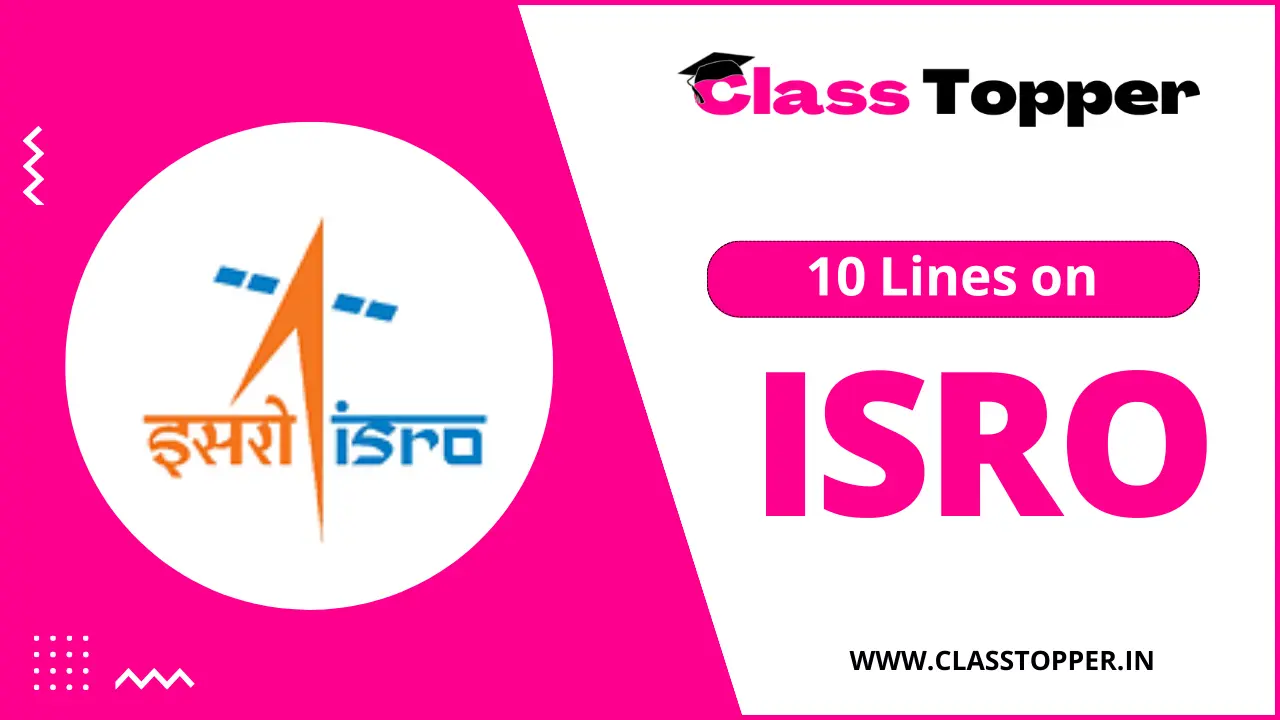10 Lines on ISRO: The Indian Space Research Organization (ISRO) is India’s national space agency. India has been steadily building its launching and exploration capabilities for decades.
ISRO’s roots stretch back to 1962, when India’s first prime minister, Jawaharlal Nehru, enlisted physicist Vikram Sarabhai to set up the Indian National Committee for Space Research (INCOSPAR). Sarabhai is known as the founding father of India’s space program because of this effort.

10 Lines on ISRO for Kids
- The national space agency of India, ISRO’s purpose is the pursuit of all space-based applications such as research, reconnaissance, and communications.
- It undertakes the design and development of space rockets and satellites, and undertakes explores upper atmosphere and deep space exploration missions.
- At present, ISRO operates one of the largest constellations of active communication and earth imaging satellites for military and civilian uses.
- Kalpana-1 (MetSat-1) was ISRO’s first dedicated meteorological satellite.
- The Satellite Launch Vehicle (known as SLV-3) was the first space rocket to be developed by India.
- Launch Vehicle Mark-3 (LVM3), previously known as GSLV Mk III, is the heaviest rocket in operational service with ISRO.
- ISRO and Tata Institute of Fundamental Research have operated a balloon launch base at Hyderabad since 1967.
- ISRO played a role in the discovery of three species of bacteria in the upper stratosphere at an altitude between 20–40 km (12–25 mi).
- Chandryaan (‘Mooncraft’) are India’s series of lunar exploration spacecraft.
- ISRO is developing and operationalizing more powerful and less pollutive rocket engines so it can eventually develop much heavier rockets.
10 Lines on ISRO for Students
- The Indian Space Research Organization, commonly referred to as ISRO, is the national space agency of India.
- It operates as the primary research and development arm of the Department of Space (DoS)
- The Chairman of ISRO also acts as the executive of DoS.
- ISRO has the world’s largest constellation of remote-sensing satellites and operates the GAGAN and IRNSS (NavIC) satellite navigation systems.
- It has sent three missions to the Moon and one to Mars.
- ISRO’s spin-off technologies also have founded many crucial innovations for India’s engineering and medical industries.
- Modern space research in India can be traced to the 1920s, when scientist S. K. Mitra conducted a series of experiments sounding the ionosphere through ground-based radio in Kolkata.
- Later, Indian scientists like C.V. Raman and Meghnad Saha contributed to scientific principles applicable in space sciences.
- After 1945, important developments were made in coordinated space research in India by two scientists: Vikram Sarabhai, founder of the Physical Research Laboratory at Ahmedabad, and Homi Bhabha.
- Initial experiments in space sciences included the study of cosmic radiation, high-altitude and airborne testing, deep underground experimentation at the Kolar mines—one of the deepest mining sites in the world—and studies of the upper atmosphere.
Read other related post– Short Essay / 10 Lines.
Feel free to leave any related questions or suggestions in the comments section below. Your feedback is valuable to us! If you find this information interesting, don’t hesitate to share it with your friends who might also enjoy reading it. Sharing is caring!

You must be logged in to post a comment.